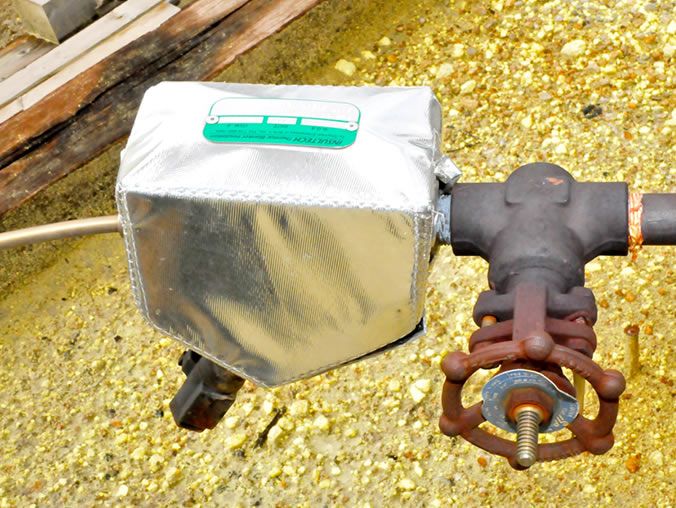High-quality, yet low-cost
The recommended solution for covering a steam trap or even a boiler door is a heat shield, which (when designed specifically for the dimensions of the intended application) delivers safety and energy efficiency. A high-quality design is the linchpin for improving condensate-return temperature and steam quality. When facility managers improve steam quality, the byproduct is reduced wear and tear on assets like turbines and other processing equipment fed by steam.
Below is a sample of the readings and temperatures we typically find in the field when encountering uninsulated steam traps like the GESTRA® MK-45. During a survey, we recorded the surface temperature of a GESTRA steam trap at 274 F. At the time we measured the steam trap, the facility manager’s steam cost was $10 per mm BTU. The operating cost of running this uninsulated steam trap was $65.80 per year. Our recommendation for blanketing this steam trap was to use a weather- and water-resistant heat shield for an industrial setting. The outer jacketing of the blanket we used was composed of aluminized vacuum metallized fiberglass cloth, and inside the jacketing we filled the heat shield with non-woven glass fiber. This design accommodates a maximum temperature of 500 F. A heat shield designed and manufactured to these specifications, typically lasts 15 years.
Once blanketed with a removable and reusable heat shield for saving energy and protecting workers, we achieved the following results for the steam trap owner:
- Ambient temperature was 80 F.
- Annual savings in energy cost: $49.55.
- Payback period: 2 months.
- Lifetime saving from blanketing this one steam trap: $743.18.
Imagine how the savings accumulate when a facility manager insulates hundreds of its steam traps, each with a heat shield. Achieving those gains, though, requires something that most contractors and blanket manufacturers choose not to do: Develop blankets with exacting specifications and standards in mind and custom fit for each application and component.
Why does that matter? If workers can’t easily remove the blanket, inspect a component, and replace the blanket in a minute or less, then the savings noted above never happen.
Adherence to specifications and tests like ASTM and UL enable blanket makers to create a product that’s truly reusable, which is the linchpin for savings and safety. So often, facility owners and managers base the decision to insulate on cost. They (or their purchasing department) find the lowest cost insulation. Low-cost insulation is not reusable. And if it is something that a worker can manage to put back on a component, low-cost insulation rarely saves energy for long if at all. That’s because the construction of the insulation is either not appropriate for the application or so poorly fitted that thermal energy escapes from gaps or seams in the blanket.
While purchasing low-cost insulation feels like a bargain, the loss of energy from these shoddy blankets adds up to hundreds of thousands of dollars or more annually across a facility with hundreds or thousands of components. An investment up front in quality construction yields a payback for a decade or more, which truly is a bargain.

